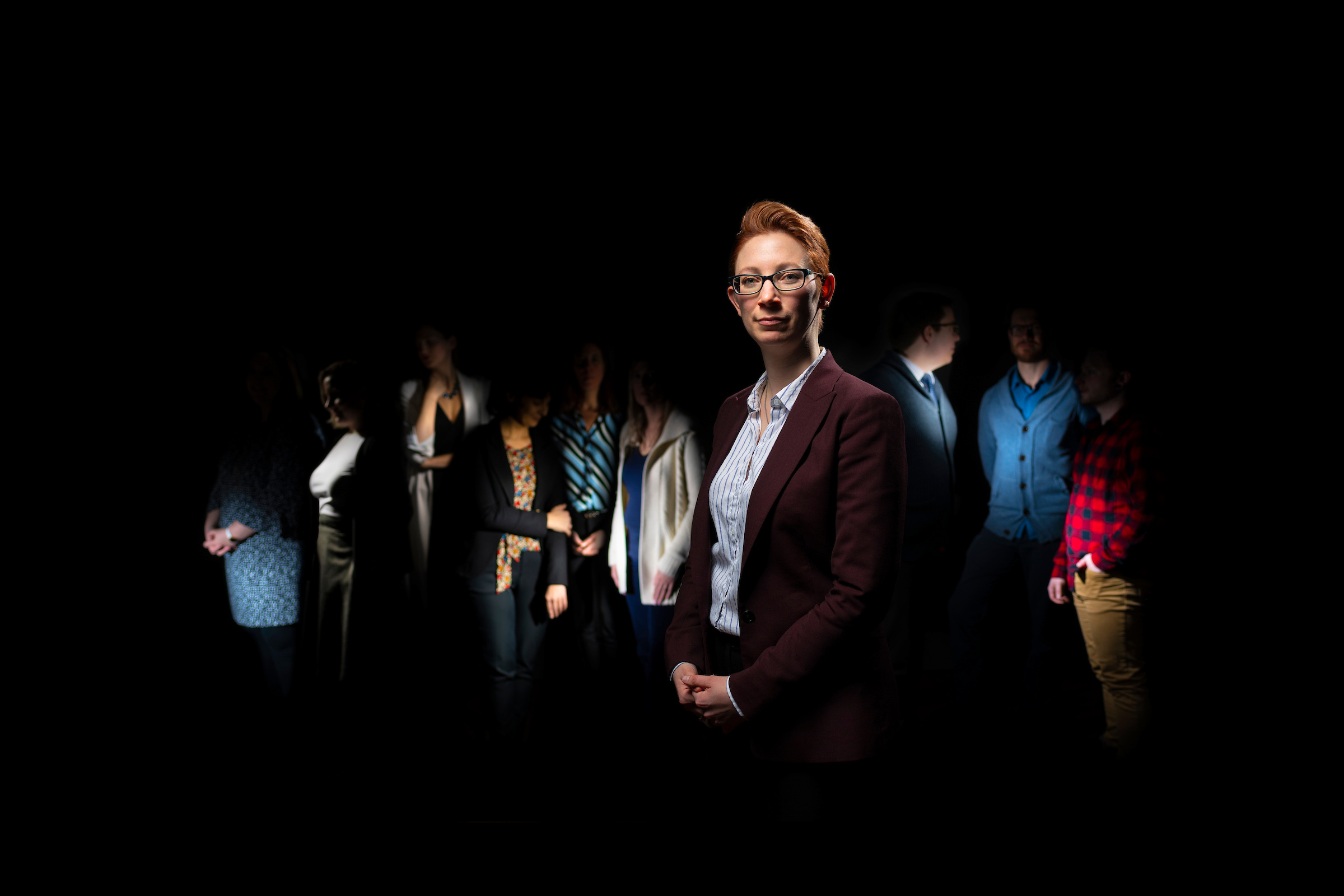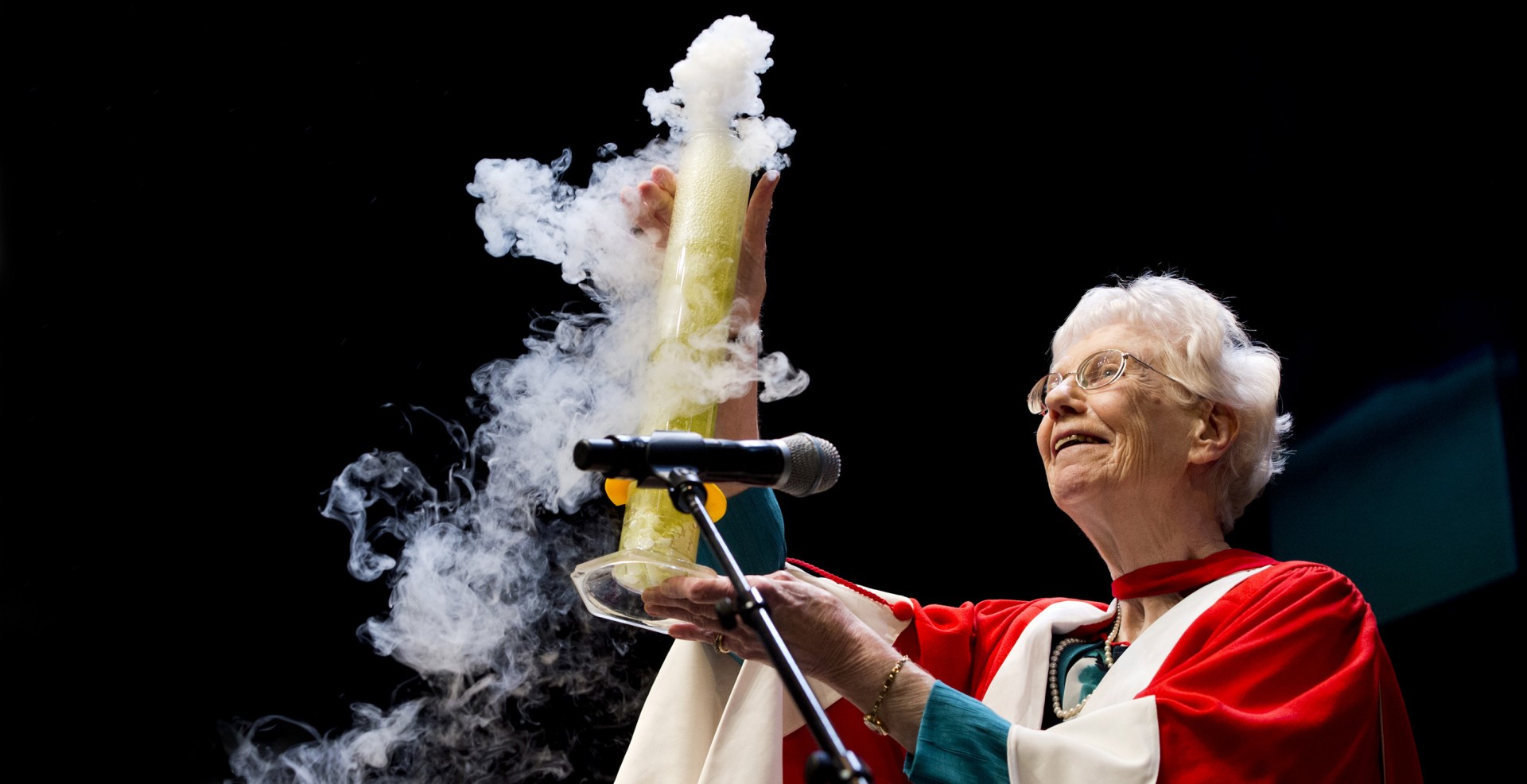For the last decade, women have made up just over half of the undergraduate student population in the Faculty of Science-an impressive and inspiring statistic. But while undergraduate students boast gender parity, the representation of males and females changes significantly among graduate students, and even more drastically among faculty members.
It's a question of attrition, explains Lisa Willis, new assistant professor (biological sciences). And as a female with a disability, she sees and experiences things some underrepresented groups encounter.
"There is higher attrition for women than men at every single level in STEM post-secondary," Willis explains. "I think part of it is when they realize they have a harder and longer race to run, and with more obstacles, they get discouraged and disheartened. I certainly know that happened to me, and I realized I needed to do something about it."
Willis started to explore whether there was a scientific basis for this discrimination. What does it look like, according to science?
She attended any talks she could on equity, diversity, and inclusion-or EDI-many of which focused on anecdotal examples, and while she realized that may work for people experiencing discrimination or those who are already engaged, she noted anecdotes don't always work well for scientists.
"I did a full literature review and found that despite the perception that things are getting better, they aren't for gender equity in STEM," Willis explains. "It has plateaued."
As part of her action plan, Willis set forward to educate her colleagues on the topic, focusing on offering workshops that highlighted the science of EDI, using data and research to reinforce her message.
Catching them young
The younger generation needs role models, she notes. "We need to change the culture for these young women and to show what a path to success looks like in order to keep them in science."
Cue WISEST. For more than 35 years, WISEST (Women in Scholarship, Engineering, Science & Technology) has been working hard to empower women in the fields of science, engineering, and technology through hands-on experiences, mentorship, networking, outreach, and education. At the recent CHOICES conference in Edmonton, more than 600 Grade 6 girls were introduced to various STEM activities, with the overall theme that science is something they can excel at, challenging their ideas about scientists and engineers.
And the message seems to be getting through. "Everyone has an equal opportunity to learn what they are passionate about," says grade 6 participant Reese Kennedy. "The conference gives girls the opportunity to look at all the different options in science and shows that you don't have to decide on one right away, and that there's lots of time to think about it. You can go from one area to another or you can do more than one. It's all about learning, making mistakes, moving on, and getting better."
Solution-based strategies
Diversity in research
Willis is passionate not only about building diversity awareness with her colleagues, but about applying the diversity lens to her research, noting that her experience has played a role in her glycoimmunology and microbial glycobiology research.
"I am exploring the human immune system and working to understand the differences between men and women," she says. "Specifically, I'm looking at auto-immune disease to better understand why 60 to 80 per cent of those affected are female. We know glycobiology plays an important role in immune system, but we don't know why exactly, and I think it may hold the key to some of the questions."
Willis also brings her expertise to GlycoNet, a pan-Canadian Network of Centres of Excellence of more than 140 researchers, centred at UAlberta.
Efforts toward improving EDI are also making waves at the institutional level. In 2018, UAlberta became the first university in the world to make intersectional gender research and teaching a strategic priority. Less than a year later, UAlberta announced its first EDI strategic plan, which takes a comprehensive approach to understanding and addressing issues of equity, diversity, and inclusion on campus.
Earlier this year, the federal government announced the creation of a fund to foster EDI in research, specifically in the scientific and engineering communities. In addition, $10 million in funding was directed to targeted EDI capacity building grants to help post-secondary schools embrace and increase diversity.
For Willis, this is one step in the right direction.
"With the Natural Science and Engineering Research Council (NSERC) now requiring EDI statements in grants, more faculty are becoming aware of it," comments Willis. "Requiring EDI statements brings awareness to the issue. I wish more people were offering information to scientists about diversity to get them engaged from the science aspect."
Willis notes that while many of us can be on board with the idea of EDI and want to make improvements, unless you know what it looks like on a daily basis, specific actions you can take are not always clear. While she notes much of the information and presentations focus on being generally aware of our biases, they don't go that critical step further to illustrate how to address-and change-those biases. Her workshops, therefore, focus on practical experience and suggestions to address bias on a daily basis.
"Everyone is part of the problem," she says. "We need everyone to participate to be part of the solution."
EDI tips to get you started
1. Question yourself about your biases.
Try the online Harvard Implicit Bias test to find out more about which biases you have.
2. Actively promote individuals from underrepresented groups.
Inviting a speaker? Recommending people for a new job?
Ensure your short-list contains equal numbers of men and women as well as ethnic and cultural diversity.
3. Be inclusive!
Planning an event or hosting a visitor?
Ensure the location is accessible for persons with physical disabilities.
Working in a group?
Actively seek out input from all individuals and provide multiple ways for people to participate, from speaking up in a meeting to sending ideas through email to having short one-on-one conversations.
Faculty by the numbers
A comparison of female representation in the Faculty of Science between 2009-10 and 2018-19.
Undergraduate: 52% (09-10), 51% (18-19)
Master's: 39% (09-10), 36% (18-19)
PhD: 32% (09-10), 36% (18-19)
Faculty members: 18% (09-10), 22% (18-19)
To learn more about diversity in the Faculty of Science, visit our Diversity Hub.
In Memoriam
It is with deep sadness that the Faculty of Science announces the recent passing of Margaret-Ann Armour ('70 PhD, '13 DSc). As associate dean (diversity), Margaret-Ann focused unwaveringly on increasing the diversity in our faculty. Under her tenure and tireless efforts since 2005 until shortly before her passing in May 2019, the representation of women in our faculty ranks rose from 14 to 22 per cent. We will honour her legacy by continuing to champion the cause of diversity in STEM. Margaret-Ann, you are deeply missed.

